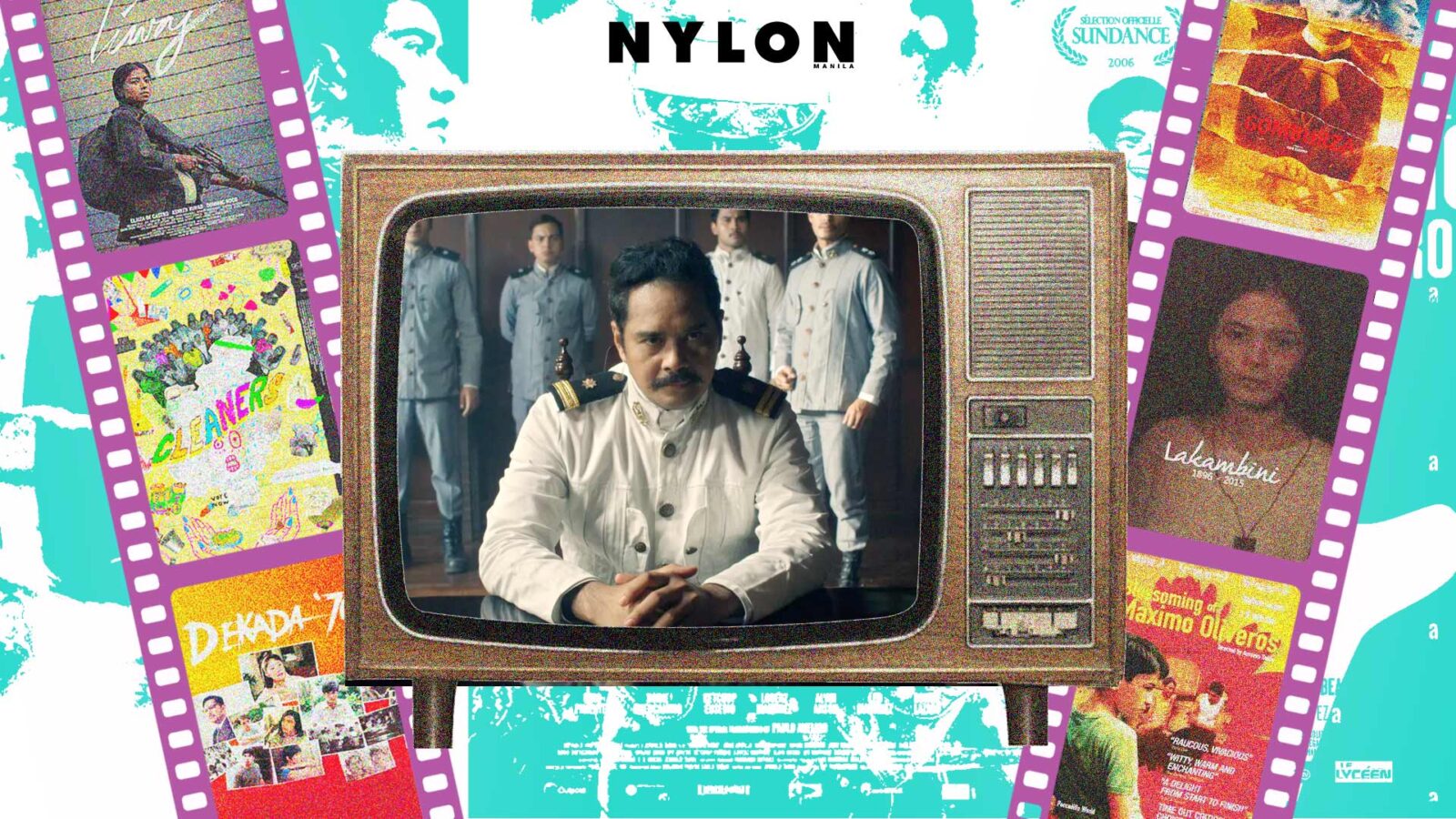From major historical events to more mundane moments, these movies tell many sides of the Filipino story.
Related: 12 Underrated Filipino Movies That You Can Stream Right Now
When it comes to telling the Filipino story, movies have always been a tool at creatives’ disposal. Cinema has been used to tell the stories of both national heroes who fought for the country during our colonial past, as well as more modern tales of what it means to be Filipino today. As we celebrate Philippine Independence Day, we look back on the heroes and ordinary citizens who tell the grit, passion, and culture of the country.
They shine a light that is both appealing and critical of what the Philippines was, is, and will become. Scroll down for a list of movies that showcase what it means to be Filipino, from the epic to the mundane, the good and the bad.
ANG PAGDADALAGA NI MAXIMO OLIVEROS
The Filipino LGBTQIA+ community and their stories have often been either ignored or relegated to the sides of history. But more and more are we seeing queer narratives take root, make space, be taken seriously, and go beyond stereotypical and harmful depictions. And when it comes to queer Filipino cinema, Ang Padgagalada ni Maximo Oliveros is a classic worth watching. This coming-of-age movie from 2005 centers on Maxi, a 12-year-old boy living in the slums with his family. As his love for a young police officer pits him against his family, Maxi must decide what’s best for him in a story about a young gay boy navigating a cruel world.
CLEANERS
When you think of places that help bring about your sense of identity, the conversation isn’t complete without including school. And lowkey Cleaners needs to be required viewing as one of the finest tales on student life in the Philippines. The debut feature film of writer and director Glenn Barit, Cleaners is a coming-of-age anthology film about high school student cleaners from a rural Catholic school in Tuguegarao City in 2008. These students struggle with different societal pressures of being clean, proper, and pure while they discover that the world is dirty and superficial to begin with.
What makes Cleaners so unique is that it is entirely made from photocopying each frame on paper. Around 34,560 sheets of paper were used with the only color coming from highlighters as the protagonists were manually colored. This then gives the film a stop-motion effect. Beyond that, each vignette deals with its own story, but all circle back to themes that you may experience when in high school from young love, to fitting in, working with people you don’t like, and more. Even if you didn’t go to high school in the late 2000s, the familiarity can still feel all too real.
DEKADA ‘70
Depictions of nationalism in film often revolve around our Spanish, American, and Japanese past. But we should also give time to movies that put the focus on more recent struggles of the Filipino people, such as this classic from the 2000s from Chito S. Roño. Adapted from the novel of the late and great Lualhati Bautista, Dekada ’70 talks about the hardships experienced by people during the Martial Law era through the lens of Amanda Bartolome. She tries to raise five sons during a time of social and political unrest. As her kids get involved in activism, the matriarch of the Bartolome family challenges her own beliefs as she learns why the fight matters.
GOMBURZA
While the story of Mariano Gomez, Jose Burgos, and Jacinto Zamora is a mainstay in history classes, this big-screen adaptation by Pepe Diokno succeeds on multiple fronts. It brings to life a historic tale in some of the most vivid ways possible. The two-hour film takes its time giving both sides of the story, from the Spanish friars’ disgust of secular priests to Filipinos in the upper and lower echelons of society who begin to understand the injustice in the country. It’s both a great film and a timely reminder that long after the Spanish colonizers left the Philippines, injustice, corruption, and abuse still infect modern society.
HENERAL LUNA
General Antonio Luna went from a historical figure to a mainstream name thanks to this movie. Jerrold Tarog’s biopic about the late military leader showcases him as arrogant and hot-headed, yet also strong-willed and determined to see the Philippines be free and independent during a time when that was far from a reality. Besides its historical merit, the movie also delves into the psychology of the characters, showcasing that sometimes, the Filipinos’ biggest enemies are themselves. Add its sequel, Goyo: Ang Batang Heneral, and the heroes, villains, and victims of the Philippine-American war have their fair share of representation in cinema.
JOSE RIZAL
Whether you heard about it because of its critical acclaim or you were forced to watch it in school, there’s a reason why this movie about Jose Rizal has withstood the test of time. Produced by GMA Films and directed by the legendary Marilou Diaz-Abaya, this 3-hour epic delves into the life of our national hero and how became the figure that he was. While there are other movies you can watch about Jose Rizal (we recommend Bayaning 3rd World), this film just does it with the heart, soul, and passion put into it.
LAKAMBINI
Men often get the lion’s share of attention when it comes to heroes praised in cinema. But women also deserve attention for the part they played in Philippine history. One such figure is Gregoria de Jesus, Andres Bonifacio’s wife, who is the center of this biopic based on the Palanca-winning screenplay by Rody Vera. Named after the title she was given as the muse of the Katipunan, Lakambini depicts the pivotal role she played in the Philippine revolution that you often don’t read in your history books at school.
LIWAY
Liway may seem like a harrowing fictional story, but it is real, and based on the life of someone who is still alive today. Written and directed by Kip Oebanda, the movie is set during the final years of the Martial Law era and tells the tale of Dakip. He is a young boy who grows up in a prison camp with his parents, both of whom were arrested due to their membership to the New People’s Army. As the film progresses, we see the lengths a mother goes to keep her son safe at a time of great uncertainty while also dealing with an increasingly oppressive system.
QUEZON’S GAME
History might have taught you that Manuel L. Quezon was the second president of the Philippines. But did you know that he played a pivotal role in helping Jews escape Germany during WW 2? That’s the focus of this historical drama that follows Quezon as he works against the powers that be to open up the country as a refuge for Jews that were escaping persecution in Nazi Germany in 1938. Who says you can’t use movies to teach little-known but interesting facts about history?
WOMEN OF THE WEEPING RIVER
From the battlefields of Luzon during the Spanish and Filipino-American wars, we go down to Mindanao. This 2016 film by Sheron Dayoc gives the spotlight to the decades-long conflict in the Muslim community in Mindanao, as well as the history and culture that shape the community. It centers on two women in a Muslim community in Mindanao who have to face and stop a blood feud that has spanned generations. Adding to the movie’s authenticity and narrative, non-actors from Western Mindanao were tapped to play the characters.
Continue Reading: Your June 2024 Watchlist Isn’t Complete Without These New Movies And Shows





